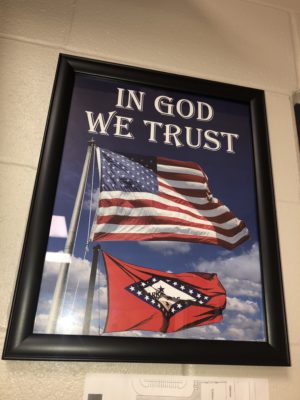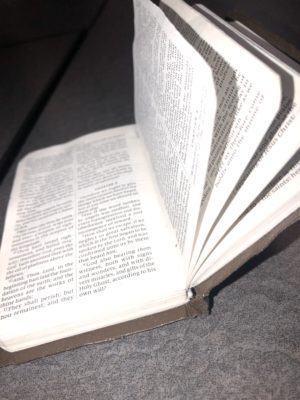Searcy, AR (LP) — There’s a lot of misinformation about what teachers are allowed to do when it comes to discussing religion in public schools. But the truth is, it’s both legal and important to teach about religion and the diversity of religious and nonreligious world-views. How do you help students of all religions—or no religion—feel safe, supported and accepted? By creating a classroom culture in which religious diversity is respected.
Olivia Jones, a parent of a Searcy High School student states, “I don’t see anything wrong with teaching different religions because they do exist, and children have a right to make an educated decision about the religion they choose.”
Conflicts over religion in school are hardly new. In the 19th century, Protestants and Catholics frequently fought over Bible reading and prayer in public schools. The disputes then were over which Bible and which prayers were appropriate to use in the classroom.

Emily Baker, a student at SHS states, “Searcy could incorporate the study of various religions by offering a class for this specific subject and it could be taught more in depth in our social studies classes.” But some people may worry that exposing the different religions could take away from a students individuality and could cause conflict with how their parents want them to be taught vs. how they are being taught at school.
From a parent’s perspective, Olivia states, “Parents should definitely be involved. They should be aware of how religion is taught to their children. Involving parents would decrease the chances of us being upset that we were left out of something so majorly important in our child’s life.”
Parents should feel comfortable sending their children to school and not fear that they will be preached to or forced to pray according to someone else’s faith tradition. In some public schools, students may engage in truly voluntary prayer, may read the Bible in a non-disruptive way and may form religious clubs that meet after school, but it has to be their choice. They can also talk to fellow students about religion, so long as it isn’t harassing. But public schools may not pressure students to engage in prayer or other religious activities.
Olivia adds, “Children would definitely benefit because they are learning about diversity and different religions. Therefore, they can make a more educational decision about which religion they fit more into from what they’re taught. They can learn however they need to, whether that includes the Bible or not.”

A wave of “Bible literacy” bills emerging in state legislatures would allow more students in public high schools to study the Old and New Testaments. Proposals from lawmakers in at least six states would require or encourage public schools to offer elective classes on the Bible’s literary and historical significance. That’s a more narrow focus than what’s typically covered in courses on world religions. Some of the lawmakers, and leaders of Christian groups supporting the bills, say they want to restore traditional values in schools and give students a chance to study the religious text deeply.
Viewing this from a students point of view, Emily states, “I don’t think we should necessarily have Bible classes. Religion and Culture classes would be more helpful and educational rather than focusing on only Christian studies.”
One of the best ways to establish religious harmony in society is to instill the values of religious tolerance and acceptance of other people who are different in many ways. Harmony is not attained by ignoring religion but by acknowledging all religions and then having one’s personal space and faith. Bringing religion into public schools can allow children to be more open to who they are and what they believe in. School needs to be a place students feel safe in, and acceptance of their beliefs can increase the chances of teenagers feeling at ease when they’re here at school.
